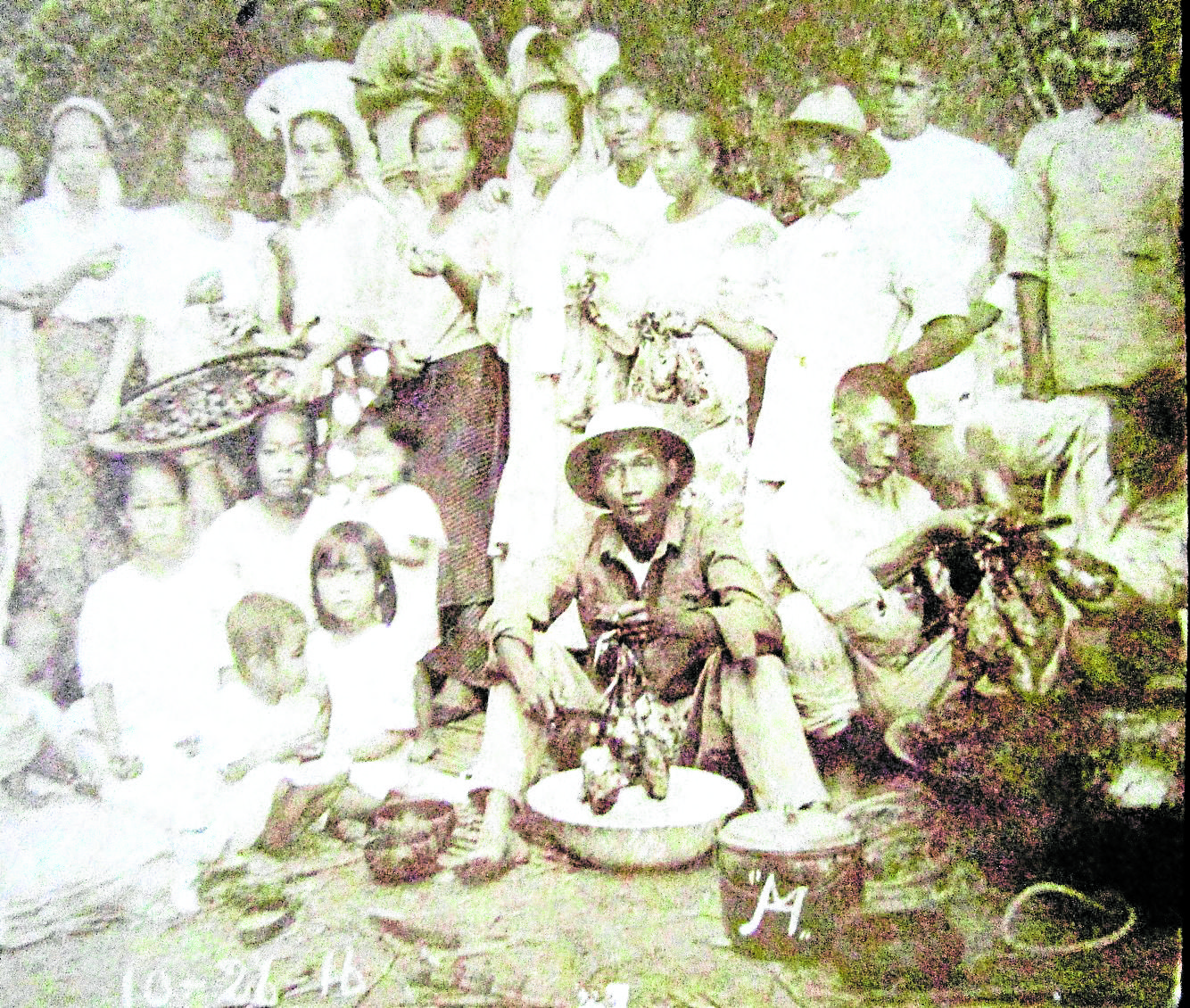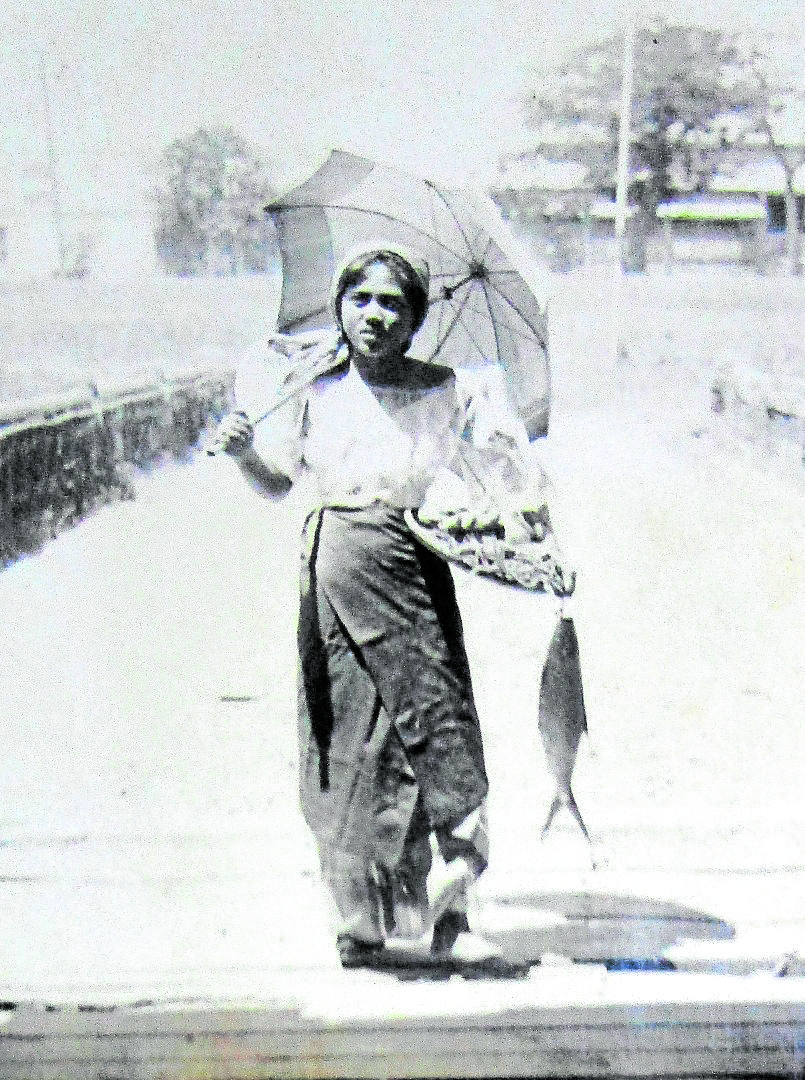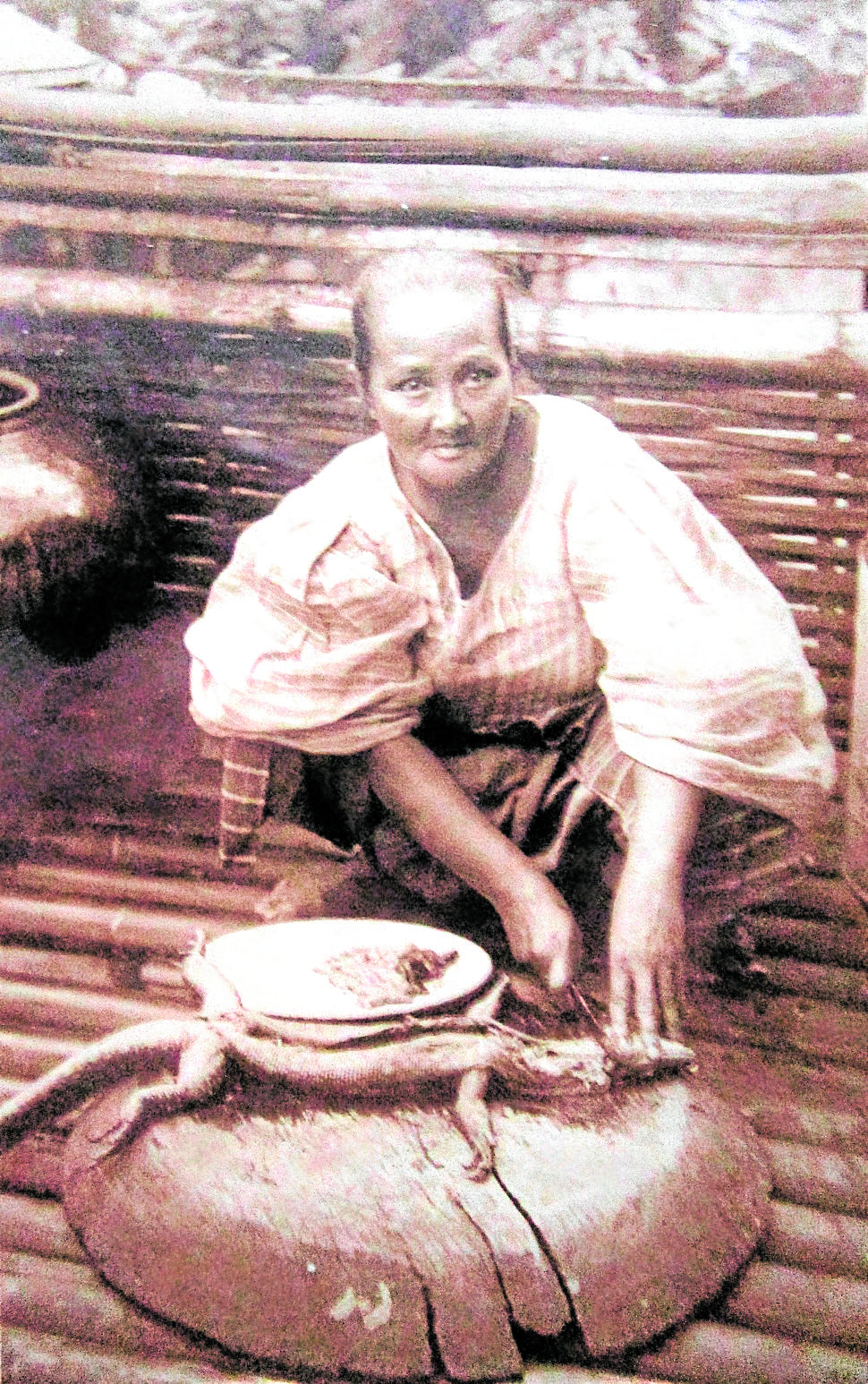Kapampangan ‘survival’ dishes
CITY OF SAN FERNANDO, Pampanga, Philippines — Kapampangan people will most likely be the least to go hungry should the new coronavirus disease (COVID-19) pandemic, or other health and environmental threats lead to food shortages.
Cultural advocates, including food heritage chef Lillian Borromeo, strongly think so because Kapampangan, while proud of their reputation as gourmands, also have an arsenal of survival food in times of famine.
Often mentioned is “quisa”—rice cooked with “kamote” (sweet potato), corn, yam, or peanuts as an alternative when palay (unhusked rice) is scarce.
For Borromeo, stocks of “ibe,” or small, dried shrimps, come handy to flavor whatever vegetable is available. Soup can easily be made by mixing shreds of “tinapa,” or smoked fish.

CLAN PICNIC In this 1916 photo, members of a Kapampangan clan go to a picnic, bringing their respective dishes to the gathering. —ALEX R. CASTRO COLLECTION
Poor people’s dishes
In the Kapampangan Listorian blog in July 2016, Alex Castro listed “10 little-known Pampangan Kalulu” (poor people’s dishes).
“These can be called survival food because it’s making do with what is available,” said Castro, curator of museums at the Center for Kapampangan Studies (CKS) of Holy Angel University in Angeles City.
Castro’s list consists of:
- “Abriu,” or soup with kamote, ampalaya (bitter gourd) leaves and broiled tinapa.
- “Gatas tigre,” or water poured on cooked rice plus a dash of salt.
- “Tim,” or ground pork boiled in carabao’s milk until the milk coagulates and the pork settles down.
- “Paksing demonyus,” or eggplant, ampalaya and okra cooked in vinegar, black pepper and ginger minus the fish.
- “Bistig utak babi,” or pig brain stewed in soy sauce and kalamansi (Philippine lime) juice.
- “Postri,” or sauteed ripe guava fruits, simmered with string beans.
- “Tulud mangga”/ “Balubad,” or shoots of mango, or “kasoy” (cashew) leaves blanched and mixed with “alubebe” (fish paste) and vinegar.
- “Sabo talilung,” or “maligoso” soup of sardines and common herbs picked from the roadside.
- “Bobotu sasmuan,” or tiny, bite-size “tamales” that are available only during the Kuraldal festival and only in front of Sta. Lucia chapel in Sasmuan town.
- “Daing talunasan,” or giant eel brought down from the hills by Aetas, and sundried and fried.

NATIVE SNACK “Suman,” or sticky rice wrapped in coconut fronds, is a popular snack even during Pampanga’s early days. —ALEX R. CASTRO COLLECTION
Emergency food
Kamote is “indispensable because it could be fried, stewed, boiled and roasted,” Castro said. There are also “de lata” (canned) emergency food like pork and beans, and sardines, he said.
Joel Mallari, an anthropologist, has these on his list: All sorts of “Lagat,” or vegetables removed of bitter taste and cooked in vinegar like “sabo Bonifacio” and “sabo bato kapulan.”
Some are exotic like insects “kamaru” (mole crickets) and “balang,” “tapang dagis” (rats), “arobung talibatab” (bats), “sabo maligoso,” “gisang kwat kildap” (mushrooms that appear in the first rains of May), “Pindang Damulag,” “sabo maklak,” “pansit maklak,” “barali” and all sort of “buru,” or fermented rice with “mustasa,” mango, fish, shrimp or pork.
“Buru betute” (frog stuffed with meat), kamaru and “pindang” (salted or sweetened meat) topped the list of Robby Tantingco, CKS director.
Francis Musni, director of Don Honorio Ventura State University Heritage Museum, listed soy sauce and cooking oil mixed in rice, carabao milk with banana sprinkled with salt, “langguk kamote,” “langguk kulabasa,” “suam ebun,” or corn soup with egg, and “tinolang tugak” (frogs).
Chef Sau del Rosario, a native of Angeles City, lined up a few like “camansi” with “gata,” “patola misua,” boiled “saguin” and camote, and “monggo” with ampalaya.

REGULAR FARE Fish is a regular viand in southern Pampanga where the Pampanga River leads to Manila Bay. —ALEX R. CASTRO COLLECTION
No recipe book
There is no single book that provides the recipes for these.
Tantingco said the survival food evolved as the Kapampangan coped with the destruction of crops and livestock that came with the hazards of their geography and politics like floods, the World War II, the Huk rebellion, and Mt. Pinatubo eruptions and lahar flows.
Musni observed: “What is difficult in Pampanga is that amid the hard times, people still find means to eat delicious food.”
Mallari said the use of survival food depended on the availability of food in dry or wet season, or life cycle of insects. Kamaru, for instance, thrived during rainy days.
As rice is an important commodity to the Kapampangan, it was timely that Luzon was placed on enhanced community quarantine (ECQ) shortly after the rice harvest period, Mallari said.
So in the ECQ that was twice extended in Pampanga and other Central Luzon provinces, it appears that no widespread famine has so far occurred, a situation that does not fuel the need to depend on survival food, he said.
Where he lives, Mallari said people often went out to buy food during the quarantine. “They seem not to have stocked up on food perhaps because they prefer fresh food,” he said.
His barometer of when things turn worst is when his neighbors start to ask for ripe fruits as viand.

COOK’S GUIDE In the early 1900s, Kapampangan women were expected to be good cooks that recipes were compiled for them in a 1930 cook book (top). Even “barag,” or large lizards, can be cooked in many ways in Pampanga. —ALEX R. CASTRO COLLECTION
Social class, location
Tantingco said the kinds of survival food also depended on class and location. The distinctions are between “pamangan kalulu” (poor people’s food) and “pamangan makualta” (rich people’s food), and southern (where marine life in the Pampanga River and Manila Bay) and northern towns (where plants, poultry and livestock thrive).
COVID-19 also challenged the concepts of sources of food, Mallari said. These include the public market and village-based “talipapa,” or backyard garden.
Delivery services by restaurants, fast-food centers and app-based firms have eased food supplies in urban centers, Tantingco said.
In case of famine, he said survival food would really clash with the tradition of good food.
The coming planting season may spell starvation or sufficiency, depending on how farmers cope with the extreme heat and, later, floods.
For more news about the novel coronavirus click here.
What you need to know about Coronavirus.
For more information on COVID-19, call the DOH Hotline: (02) 86517800 local 1149/1150.
The Inquirer Foundation supports our healthcare frontliners and is still accepting cash donations to be deposited at Banco de Oro (BDO) current account #007960018860 or donate through PayMaya using this link.
